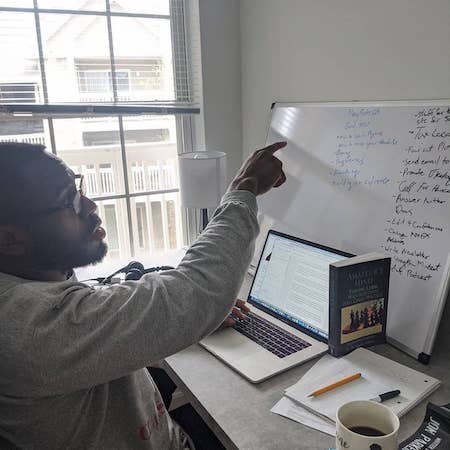In the digital age, where information proliferates with unprecedented speed and volume, social media has become the marketplace of ideas where dialogues and monologues churn perpetually.
Although it breeds creativity and connectivity, social media is a complex system prone to entropy. Generally speaking, the easiest way to think of entropy is a measure of disorder and randomness. It’s the energy in a system that is unable to do any work. Yet within this labyrinth of data and interaction, there is a potential for order, a structure that we can both create and discern.
What is “Digital Entropy”?
In social media, entropy can be seen as the clutter of content, the cacophony of voices, and the unpredictable way information spreads and transforms. The second law of thermodynamics states that entropy in a closed system will never decrease; similarly, the chaos of social media seems ever-expanding. For example:
- Unpredictable Virality: Phenomena that capture global attention overnight often emerge from the most unanticipated corners of the internet. These viral sensations spread with a rapidity and scale that defy logical prediction, embodying the very essence of digital entropy.
-
Evolving Digital Landscapes: The digital domain witnesses the continual ascent and decline of its platforms. The journey of social media from MySpace to TikTok exemplifies the transient nature of social media prominence, highlighting the unpredictable shifts in user engagement and platform relevance.
Both users and social media platforms have become quite savvy at organizing the flood of information. They work hard to turn the overwhelming chaos into manageable and meaningful streams of content.
- Smart Selection by Algorithms: Imagine if your social media feed knew exactly what you liked – from your favorite food to your preferred music bands, from your most used video editor to your most acknowledged photo editing app using your preferred GIF compressor. That’s what algorithms do; they learn from your clicks and like to show you more of what you seem to enjoy. *
- Hands-On Sorting: Sometimes, we take matters into our own hands. This can mean choosing to not follow certain accounts anymore, muting updates that don’t interest us, or telling the platform our favorite topics through its ‘interests’ settings.
Voice Cloning Enters the Chat
But as we march towards an ever more personalized digital experience, voice cloning comes into play, offering an entirely new level of interaction. With voice cloning, the once clear distinction between creator and creation blurs, as synthesized voices become indistinguishable from the originals.
This advancement adds a layer to the digital puzzle, redefining the authenticity of what we hear online and complicating the preservation of genuine communication, thus contributing to the social media entropy.
Favoring Depth Over Breadth
Another approach to reducing the overwhelming nature of social media is to focus on the quality of interactions rather than just the sheer volume of content.
Platforms such as Instagram and Twitter are now encouraging us to engage more deeply with the content. Instead of just aimlessly scrolling, they’re introducing features that make us stop, think, and interact in more meaningful ways.
The algorithm favors engagement over all other metrics when determining how wide your content is spread.
Temporal Structuring
Social media platforms are creatively tackling the overflow of endless content by integrating features that set time limits on what’s shared.
Across multiple platforms, ‘Stories’ have gained popularity for their self-erasing nature. This means that after a set period, usually 24 hours, these snippets of our lives vanish, bringing a neat lifecycle to our shared moments.
Twitter introduced ‘Fleets’ as a nod towards ephemeral content, allowing users to post thoughts and moments that disappeared after a day. Although Fleets was a temporary experiment, it represented a step towards incorporating transient, less permanent forms of sharing into our digital conversations.
The Role of User Agency
Amidst digital entropy, user agency remains a critical component in the quest for harmony and order.
Just as literacy revolutionized access to written knowledge centuries ago, social media literacy has the potential to drastically enhance the user experience today. By understanding the underpinnings of different platforms — their unique algorithms, privacy settings, and content curation methods — users can master the tools at their disposal.
As consumers and creators of content, users play a vital role in shaping the landscape of social media. The act of choosing — what to share, where to comment, which posts to endorse with a ‘like’ — is a powerful form of agency and can significantly influence the contours of digital discourse.
By actively managing their privacy settings, users can dictate what they share and with whom, adding another layer of control over their digital footprint.
Users can also manage their connectivity intentionally, choosing to follow, connect with, or block other users as per their preferences, thus influencing the way they interact with, and experience, the digital world.
Lastly, practicing responsible digital citizenship, such as reporting inappropriate content or standing up against cyberbullying, can contribute to creating a safer and more orderly social media environment.
Conclusion: Entropy or Harmony?
Finding order within the digital chaos of social media is akin to desiring clarity amid a storm. While the system might inherently tend toward disorder, the pursuit of structure is not futile.
Users, algorithms, and platforms themselves engage in an ongoing dance of chaos and control. The result is not complete order but a dynamic equilibrium — a digital ebb and flow that reflects both the entropy and the unexpected beauty of our interconnected lives.


